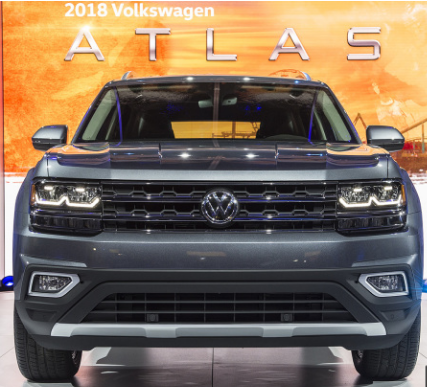 |
| The super-sized Atlas isn't the three-row VW should build. |
The super-sized Atlas isn't the three-row VW should build
Following the market is the opposite of what constituted VW's historical successes.
Otomotif News - In the late' 50 s and early' 60 s the Volkswagen Beetle wasn't pervasive in my hometown of Lincoln, Nebraska, but it came fairly damn close. Fords and Chevys predominated, but beyond the periodic MG, Triumph, or Renault the importation place was virtually a VW scene. When my tribes eventually drew the provoke on a second vehicle they bought a Beetle, and that shopping process was my first showing to a Volkswagen showroom.
For our lineage VW love wasn't a cult, but our' 66 simulate worded- as did all Volkswagens and most imports at the time- of a return to common sense in your transportation preference. As VW's own market so wonderfully transmitted, you didn't need large-scale fins or annual simulate changes to go seizure that carton of milk. Or, for that matter, to grab a week's worth of lineage festivity. In the wretched excess that was most of Motown at the time, the Beetle, Combi, Squareback, and even Karmann Ghia spoke to a negligible- but never plain- take over transportation as personal expression.
Fifty years after that initial Beetle exposure, and as a fan of imports for what I believe to be all for the human rights grounds, the introduction of Volkswagen's Atlas to the world market is akin to a sociological bowel punch. How is it that a firebrand whose modus operandi was to be the anti-Detroit could find itself warmly adopting Detroit and the extravagance it has historically represented? Don't tell me it's because VW's Americanization of the Passat is going so well.
To be fair, the domestic do-over of import firebrands didn't begin with the new Atlas crossover. Importations have been growing solid almost as long as Americans have, and it's a worldwide trend. An early 911 is a veritable shred when is comparable to its current counterpart, which constitutes- coincidentally- a 50 -year gestation. In equating today's BMW 3 Series to its'' 77 predecessor, I recognize a 5 Series footprint. And how did four adults go to lunch in the early 3 Succession? It is so much smaller than what we've become accustomed to today; the present 2 Series is more substantial.
My empty-nester-view of three-row crossovers is true for most shoppers: If you need three sequences of passenger faculty no more than two or three times a year- and most don't- lease it forgawdsake. If you do need the room more often, consider a minivan, which leads about its three-row mission with much more utility( and modesty) than any SUV. And it's tangential to this argument, but where VW ascertains the millions or billions in the manufacture and sale of an SUV, I- and millions or billions of others like me- think they should have done an all-new Combi, Vanagon or Eurovan, and not a GMC clone named for a mythic Greek.
The tale of the videotape is very telling. Few hard specs have developed following VW's reveal of the Atlas in Santa Monica, but an overall segment of 198 inches, width of 77. 9 inches and height of precisely under 70 inches keeps the Volkswagen within a hairbreadth dimensionally of Dodge's three-row Durango. Make me echo: Dodge Durango. My tribes drove a Dodge 440 wagon at one point instantly prior to buying their' 66 Beetle, and I can assure you at that time the only event that Volkswagen and Dodge had in common was their gas station.
The super-sized Atlas isn't the three-row VW should build.
This diatribe isn't just about the tribes from Wolfsburg by way of Chattanooga. At this year's Los Angeles Auto Show Subaru previewed its Big-hearted Idea with the three-row VIZIV -7 concept. Based on the specs previously shared, its wheelbase, overall segment and thicknes set the new Subaru in the Chevy Tahoe size category. Subaru's last three-row, the B9 Tribeca, was ten inches shorter in wheelbase, 15 inches shorter in overall segment, and a full six inches narrower than what was shown in Los Angeles. And while the B9 weighed in at a relatively chunky 4,100 pounds, we'll guess the creation form of the VIZIV -7 will be around 5,000 pounds.
I know America has an craving for large-scale three-row crossovers. We also( regrettably) like our Big Macs. But import firebrands don't need to give in to the oversized-burger mentality. It's time to stumbled the reset button on the groupthink that predominates modern product programme. Both Volkswagen and Subaru substantiated themselves as outliers in a too-big, too-crowded mart, and have traditionally superseded by putting wholly original remember on the street.
Going forward, I see nothing incorrect with most import manufacturers staying in their respective comfort zones, and neither- in my view- would their customers. To perpetuate firebrand loyalty the companies should work harder at retain their firebrand identity. Is their current, collective move to' large' better? Not by a long, wide-cut, and overstuffed shot.
Source : autoblog.com


No comments:
Write comments